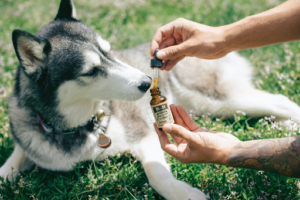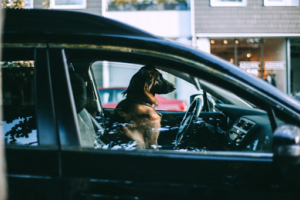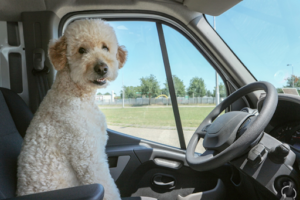If you can’t stay away from your dog, you’d want to take it with you everywhere you go. Although most dogs are excited about riding in the car, some may become terrified and whine, drool, or even vomit. It’s usual for dogs to feel anxious while traveling.
The motion sickness can make them feel locked in a cage. Moreover, dogs may avoid car journeys if they think the destination is unpleasant, such as the vet. Chances are, your dog may turn into a reason for everyone’s irritation. Therefore, you need to sort the matter out to help your dog feel at home.
Here are some handy tips to prevent and treat dog travel anxiety.
1. Start Things Positively
It’s never too early to start using positive reinforcement to head off your dog’s car anxiety. First, if you have a puppy, make getting in the vehicle an occasion for goodies, praises, and pleasant things. Then, start taking short trips after your dog no longer fears the car itself.
Some dogs may handle short trips right away, while others may require adjusting time. Also, be aware that a puppy’s immature ear structures might induce motion sickness, affecting their balance. If this is the case, keep the journeys brief and steady, and progressively increase the duration of your trips as your dog grows older.
If you have an older dog, start the process of training them to travel in the same way. You may not know much about an adopted dog that came from a shelter or rescue; hence, be patient with positive reinforcement. Even if the dog has lived in your family since he was a puppy, age-related problems such as arthritis can cause or induce travel anxiety. In such cases, feed him high-quality supplements like CBD. CBD for dogs can treat chronic pain in older dogs while alleviating their travel-related anxiety.
2. Make Your Dog Comfortable
It’s not necessary to travel at breakneck speed with a car full of people and music blaring on the radio, so consider the question: “How can I make my dog more comfortable in the vehicle?” First, you need to find out if your pet needs a blanket or other type of bedding combined with a snack.
Your dog might be used to sitting in the back, but what if there is no more room? Or what if he doesn’t want to sit with all of your children? Maybe he needs a different place of his own for traveling. If you can, give your dog a spot in the car where he feels safe.
3. Counter Conditioning Always Works
If your dog is afraid of vehicles, travel containers, or crates, you’ll need to perform counter-conditioning and desensitization. Begin with the lowest level of dread (e.g., the dog can see the car or carrier but isn’t nearly close enough to exhibit a fearful response, such as stiffening or tongue licking), and offer them their favorite treats. Soon, your dog will start associating this activity with a reward.

Source: pexels.com
If your dog’s anxiety is severe, you might want to hire a professional dog trainer or a veterinary behaviorist for assistance. New pet owners risk missing the subtle signs of dread during the counter-conditioning process, making the problem worse.
4. Try Alternative Solutions
Look into different transportation methods if your nervous dog is overcome with anxiety on every veterinary or groomer visit. For example, in the back of an SUV or van, securing your dog in a covered crate may be easier than putting him in a clip-in harness in the backseat of your Mini.

Source: pexels.com
If you live in a city, bear in mind that finding a veterinarian or groomer within walking distance is not impossible (even though it’s much more feasible for city dwellers). In-home appointments are available at some veterinary hospitals, and mobile grooming trucks appear all over.
If you’re leaving town and think that traveling with your dog would be more harmful than beneficial (traveling with dogs can be tiring for both humans and canines), consider hiring a pet sitter or boarding facility to keep everyone at ease.
5. Avoid Feeding Your Dog
In general, the minimum food and water inside your pet, the less will return up when traveling—overfeeding or overwatering your pet before trips can cause stomach upset. If your pet is sedated for a trip to the vet, don’t feed them six hours prior. Be sure you’ve picked up everything from tables and counters that could fall into your furry friend’s mouth.
6. Maintain a Pleasant Environment

Source: pixabay.com
Keep your car’s air conditioner on a low setting, like 50 degrees Fahrenheit. Set the conditioner to the recirculate mode, which allows for more venting and circulation of fresh air when the weather is hot and humid (avoid letting your dog stick his head out of the vehicle). You could also try using a vehicle-adapter version of a dog pheromone diffuser to help you relax. Furthermore, you may also try distracting your pooch with favorite toys or one of your old t-shirts.
Conclusion
Take your anxious dog to the veterinarian for a checkup if you’re going on a trip with him. It’s always a brilliant idea to have vaccinations and up-to-date certifications when traveling with pets, especially if you’ll be crossing state lines. It’s unusual for anyone to request pet travel papers, but it’s better safe than sorry. Try these tips, and your dog will soon be looking forward to traveling with you.




Comments